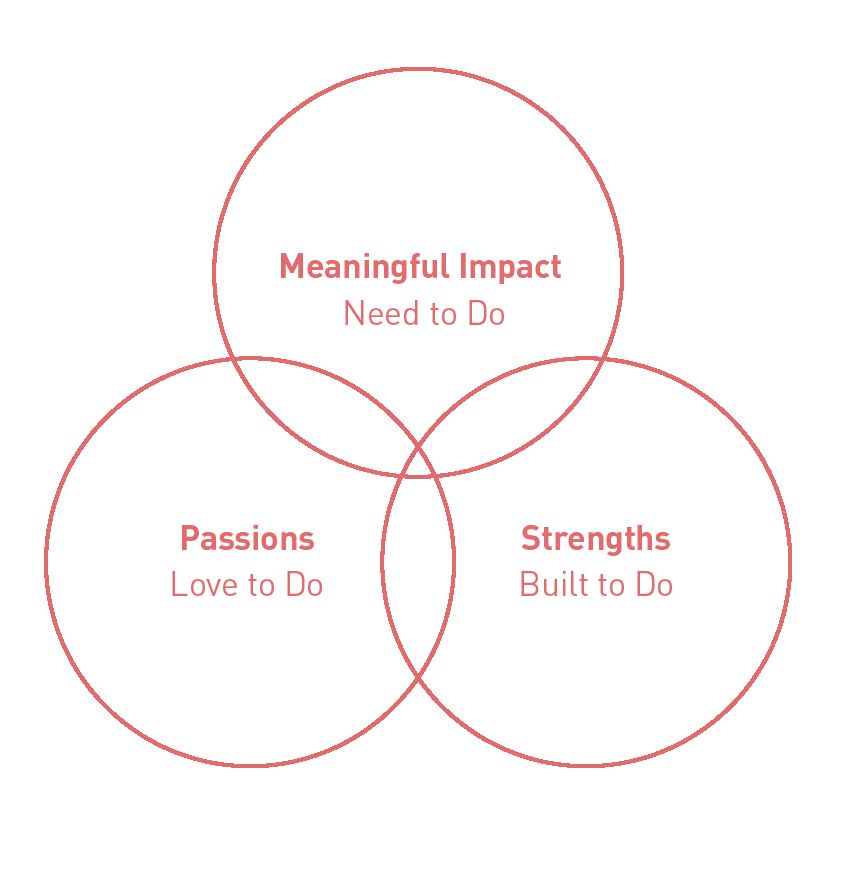More than two decades ago, we first began observing that companies operating with a greater purpose (beyond just making money for shareholders) were, in fact, creating systems where everyone flourished: employee wellbeing was high, customers were delighted, communities welcomed them with open arms, and shareholders profited handsomely.
Back then, profit-driven companies modeled the dominant ethos of business while purpose-driven companies were considered unicorns in the land of make-believe. Leaders were skeptical that companies could strive to make a difference and still succeed financially — surely, being overly concerned with improving the lives of others would come at your own expense (or so they thought). But as extraordinary purpose-driven companies like Southwest Airlines, Chipotle, Whole Foods Market, John Deere, BMW, Starbucks, and others have grown and prospered, the ascendance, acceptance, and proliferation of purpose has been nothing short of astounding.
After 20 years in the field, I’ve collected my fair share of insight into what “company purpose” really means, why purpose-driven business is so prevalent, and how you can not only determine the best purpose for your company but also leverage that purpose in service of all stakeholders. Here’s what I’ve found.
DEMAND FOR PURPOSE
1 / Humans need and yearn for purpose
After their basic survival and security needs are met, people long to have significance and meaning. People want to use their talents in service of something that matters. As Viktor Frankl put it, “The more one forgets himself — by giving oneself to a cause to serve or another person to love — the more human he is and the more he actualizes himself.”
2 / Employees thrive on purpose
It’s not surprising that people are more engaged in their work when they believe that what they do matters. Gallup has identified 12 factors known to drive employee engagement, and purpose is one of them: “The purpose of my company makes me feel my job is important.” Employees of purpose-driven organizations have higher levels of engagement, productivity, loyalty, and life satisfaction.
3 / Society increasingly expects corporations to operate with a higher purpose
The old adage “If you’re not part of the solution, you’re part of the problem” has never been more true than for businesses operating in today’s world. According to the 2018 Edelman Earned Brand, people now believe that brands have more power to solve social ills than governments do. In the 2018 Deloitte Millennial Survey, when Millennials were asked what the primary purpose of business should be, 63 percent more of them said “improving society” than “generating profits.”
4 / Investors are promoting purpose as a driver of sustainable long-term performance
Larry Fink, CEO of BlackRock and one of the world’s biggest investors, wrote in his 2019 letter to CEOs, “Purpose is not the sole pursuit of profits but the animating force for achieving them. Profits are in no way inconsistent with purpose — in fact, profits and purpose are inextricably linked. When a company truly understands and expresses its purpose, it functions with the focus and strategic discipline that drive long-term profitability.” Fink’s letter may very well be the most significant development in purpose to date — a real tipping point in settling the age-old purpose-versus-profit debate.
5 / Humanity needs the power of purpose-driven organizations to help heal the world
Capitalism has proven to be an enormous force for good in lifting people out of poverty and improving the human condition across many objective measures. And yet we also see a host of problems, like mental illness, loneliness, and uncertain economic futures for so many, along with a climate-change crisis of epic proportion. We need conscious leaders to step up and use their power, influence, and resources to heal some of humanity’s most pressing issues.
ADVANTAGES OF PURPOSE
6 / Purpose drives decision-making
With a well-articulated purpose in place, the clarity and consistency of decisions increase dramatically. You can and should look at everything on your to-do list through the lens of your purpose. If something is in alignment with your purpose, do it. If something trespasses against your purpose or does nothing to further it, then move on.
7 / Purpose fosters innovation
When people have a clear understanding of the positive impact they’re trying to make, they can get to work identifying gaps between the aspiration and the reality — and find creative solutions to fill them.
8 / Purpose holds you steady despite a turbulent marketplace
When you know and believe in what you stand for, you’re less likely to be thrown radically off course by volatile market conditions or competitive pressures. Purpose acts as a compass when navigating tough decisions; when aligned with your highest ambition, making the right decision for your company becomes much clearer.
9 / Purpose injects your brand with a healthy dose of reality
If you’re relying solely on the creativity of your advertising agency or the size of your ad budget to create and carry the brand, then you’ve got a problem. Your customers should feel your purpose in every interaction with your brand. The role of advertising for a purpose-driven organization is less about using creativity to invent a brand image and more about using creativity to tell genuine and powerful stories about the difference the brand aspires to make.
10 / Purpose attracts talent
In the war for talent, Millennials don’t just want a job; they want a calling, something that enables them to simultaneously earn a living and make a difference. To be clear, purpose is not a substitute for fulfilling the basic needs of employees (a living wage, benefits, dignified working conditions, opportunities for personal growth and development, etc.), but once those basic offerings are in place, the added dimension of doing purposeful work makes an enormous difference in attracting and retaining talented and passionate people.
11 / Purpose moves mountains
Most people don’t jump out of bed in the morning eager to increase sales by X percent; they are much more capable of extraordinary feats when they’re asked to work in service of a goal they find meaningful and worthy of their time and effort.
12 / Purpose is a path to high performance
In his book “Built to Last: Successful Habits of Visionary Companies,” Jim Collins notes that companies with purpose outperform their competitors eight to one; add the multi-stakeholder model to the equation and performance soars even higher.
13 / Purpose contributes to personal wellbeing
Purpose enhances not only corporate performance but also corporal performance, in the form of high levels of physical and emotional wellbeing. People who report high levels of “purpose in life” live longer, have lower rates of depression, lower rates of Alzheimer’s disease, reduced risk for heart attack and stroke, better sleep, and better sex!
DISCOVERING, ARTICULATING, AND BRINGING YOUR PURPOSE TO LIFE
14 / Old wisdom holds true
The saying goes: “Where your talents and the needs of the world intersect, therein lies your purpose.” It’s that simple. What’s the biggest need or problem in the world that you have the wherewithal and desire to address? The simplest tool for exploring this question is what I call “The Purpose Venn.”

- Take an honest look at your strengths: What are you built to do? It’s one thing to want to do something; it’s another to have the wherewithal to actually do it. This capability is what gives credibility to your purpose.
- Tune in to the things your people are most passionate about: What do they love to do? There’s always something that brings your people to life and makes them proud of what they do. Find it. This passion provides the fuel to fulfill the purpose.
- Identify where you can have the most meaningful impact: What does the world need you to do? Get really clear on the problem, need, or issue that you want to address. This clarity ensures your purpose is worthy of the time, energy, and talent you’ll invariably put into it.
15 / Tips for articulating your purpose
Once you have a good idea of your purpose, it’s time to put pen to paper. Here’s what I’ve learned over the decades: stay focused. Keep it simple. Aim high. Your purpose should reflect who you are when you’re at your best, but don’t end up in the ether. “To change the world for the better” is not a useful purpose. Here are a few good examples to follow.
- Disney: “To use our imagination to bring happiness to millions.”
- Chipotle: To serve “food with integrity.”
- Starbucks: “To inspire and nurture the human spirit — one person, one cup, and one neighborhood at a time.”
- Nike: “To bring inspiration and innovation to every athlete in the world. If you have a body, you are an athlete.”
- Walmart: “To save people money and help them live better.”
16 / Remember: it’s your purpose
“Who is the purpose for?” That question comes up a lot. The answer: purpose is first and foremost for the people leading and working at the organization. In a 2012 Gallup poll, 63 percent of employees and 40 percent of executives do not “strongly agree” that they know what their organization stands for. Purpose ensures that everyone goes to work knowing what they’re there to do. Don’t be overly concerned with what a customer or any other external stakeholder might think. A good communication strategy will ensure that your purpose is positioned in a way that will resonate with them when the time comes.
17 / Get your employees on board
So you’ve done some soul-searching and have landed upon a clear and inspiring articulation of your purpose. Now you must bring the purpose to life within the organization. Employees need to be informed of and engaged with the purpose in order for any of the benefits mentioned to materialize. If they believe the new purpose is just a marketing ploy or a new tagline, it’s dead in the water. Think about all of the ways that you could inspire your workforce and put as much energy into those initiatives as the ones you will eventually create for your customers.
18 / Determine where you are and aren’t fulfilling your purpose
Conduct research to assess where and how your purpose is currently being fulfilled — and where it’s not. Look at all of the ways that your stakeholders experience your brand and ask yourself if that experience is aligned with the purpose. When you find the gaps, don’t despair; it’s just an indication of where you have work to do. Create a game plan for moving toward being a fully aligned organization.
19 / Set the purpose flywheel in motion
It’s essential to understand that no organization becomes purpose-driven overnight as a result of some epic launch event, radical transformation, or spectacular breakthrough. It is a gradual process that requires continual commitment to making little purpose-aligned decisions every day. With intention, discipline, and consistency, the purpose flywheel begins to turn. Momentum builds. But to keep it going and to really gain ground requires ever-present vigilance.
THE LAST AND MOST IMPORTANT LESSON
20 / The dirty little secret about purpose
Purpose works only if it is authentic. Without a sincere and serious commitment from the leaders of an organization to act as faithful stewards of the purpose, nothing described here will come to pass. If you’re just trying on purpose as the marketing strategy du jour because employees seem to want it or because Larry Fink said you should, don’t bother. Motivation matters. The call is to think deeply about the problems facing our world that your organization has the wherewithal to heal and then to put your heart and soul into creating a more conscious company that positively impacts the word.



